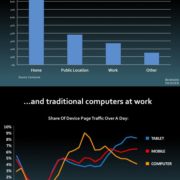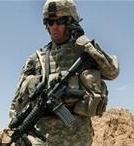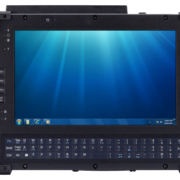One of the big changes for military vendors in recent years has been the greater emphasis placed on acquisition of Commercial Off The Shelf (COTS) products by the Department of Defense (DoD). In the past, COTS constituted a few percent of all items purchased by the DoD. While the overall amount is still low, some weapon systems are composed by as much as 50% of COTS. What are the good, the bad and the ugly about COTS?
emphasis placed on acquisition of Commercial Off The Shelf (COTS) products by the Department of Defense (DoD). In the past, COTS constituted a few percent of all items purchased by the DoD. While the overall amount is still low, some weapon systems are composed by as much as 50% of COTS. What are the good, the bad and the ugly about COTS?
Good:
1) Cost: One of the main drivers for the acquisition of COTS has been the price. By definition, COTS products have no development cost, so, in theory, the DoD gets a cheaper item. Despite its behemoth budget, Defense still accounts for a minuscule part of the electronics market. So, by buying from the much larger commercial sector, DoD also benefits from economy of scale.
2) Speed: Some argue that this is even a more important driver than cost. In contrast to the leisurely pace of peace time, quick mass production becomes a priority during war. By discarding DoD’s cumbersome development process, acquisition of innovative technologies accelerates. For example, reportedly just after Desert Storm, SIGINT troops used RadioShack scanners to gather intelligence on digital data, because their government collectors were designed for old-fashion analog signals.
3) Supply chain: Since the COTS items the DoD want are produced in commercial quantities, in theory, supply chain bottlenecks are less of a problem. Furthermore, they are no longer dependent on a single vendor.
4) Reliability: Those of us who are immersed in manufacturing environments defined by MIL-STDs 810 and 461E are accustomed to thinking in terms of “combat proven” and “military tough.” However, products produced for the commercial market are under enormous competitive pressure for ever-increasing quality. Hard as it is to believe, there are reports that procurement officers have discovered that some COTS products are superior to their made-to-spec counterparts.
Bad:
1) Enemies: Guess what? Our adversaries buy COTS too! One way our military maintains its vaunted technological advantage is through superior system integration. However, commercially available items can be still be used against us. A well-known example is the off-the-shelf software used by insurgents to tap wireless video communication from an Unmanned Aerial Vehicle.
2) Supply chain: COTS products lose their value very quickly once they are released. Someone is always coming out with something better, faster, and cheaper. As a result, vendors are not motivated to maintain support for older items. Multi-million dollars weapon systems are left idle, because of an inability to replace a simple part. And replacing that part can be exorbitantly expensive. This is a major headache.
3) Technical data: If you can’t buy an old part, why not just make one like it? Remember, by definition, DoD doesn’t pay for development of COTS items, so they don’t own the technical specifications for it.
Ugly:
Cost management: How much money has COTS saved the DoD? No one knows. DoD has greeted the increase use of COTS with new agencies and initiatives described by an alphabet soup of acronyms. Yet, according to Ron Giutini, whose excellent webinar “COTS: Zen and the Art of War Fighting Maintenance” is recommended, the DoD has not altered its predictive algorithms for COTS, has not assigned National Stock Numbers (NSN) to them and has not updated its Automated Cost Estimating Integrated Tools (ACEIT). Essentially, the DoD is flying blind on the costs of long-term support for its COTS products.
How bad are long-term costs? Replacing a single discontinued part can be exorbitantly expensive. For just one year, COTS obsolescence has been estimated to cost the Navy $750 million.
Managing COTS obsolescence – in Pentagon speak, “Diminishing Manufacturing Sources and Material Shortages (DMSMS)” – can be truly challenging. In an era when graphic cards can become obsolete in 9 months, one DoD guide recommends that Program Manager obtain product support for “5 to 15 years.”
Defense suppliers, like American Reliance (AMREL) can’t help DoD solve its accounting dilemma. However, we can make sure that no defense dollars are spent unnecessarily on COTS obsolescence. That’s why our mobile solutions are based on rugged computers with an extraordinarily long end of life. AMREL understands that supporting our troops doesn’t end with the sale.
To learn how AMREL controls Total Cost of Ownership for its COTS items, click here.




